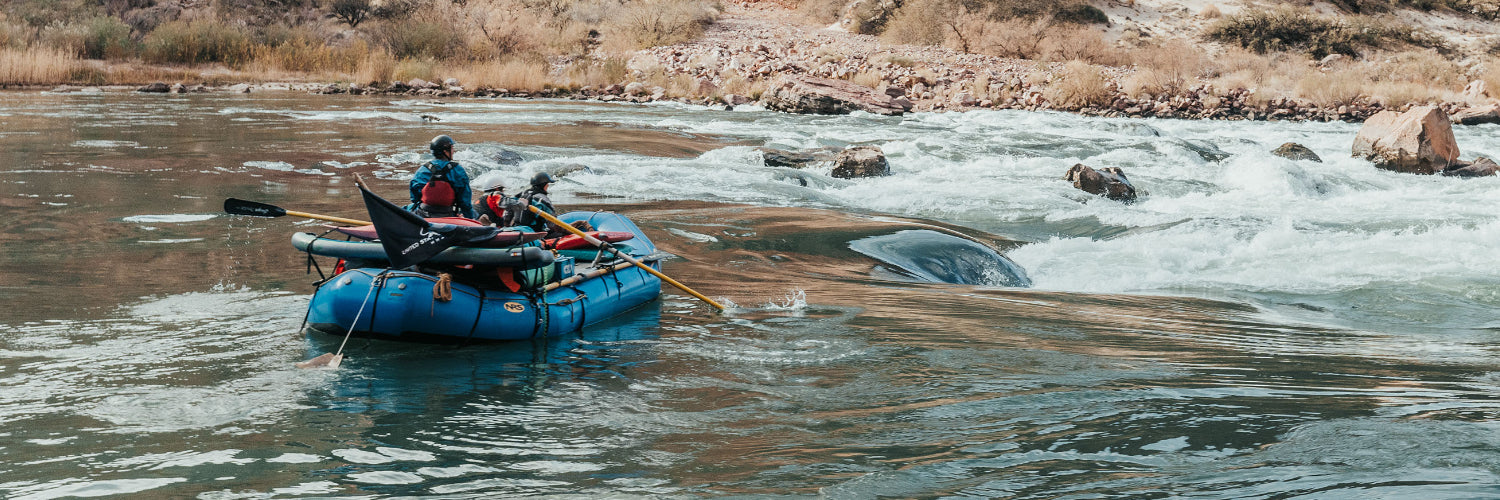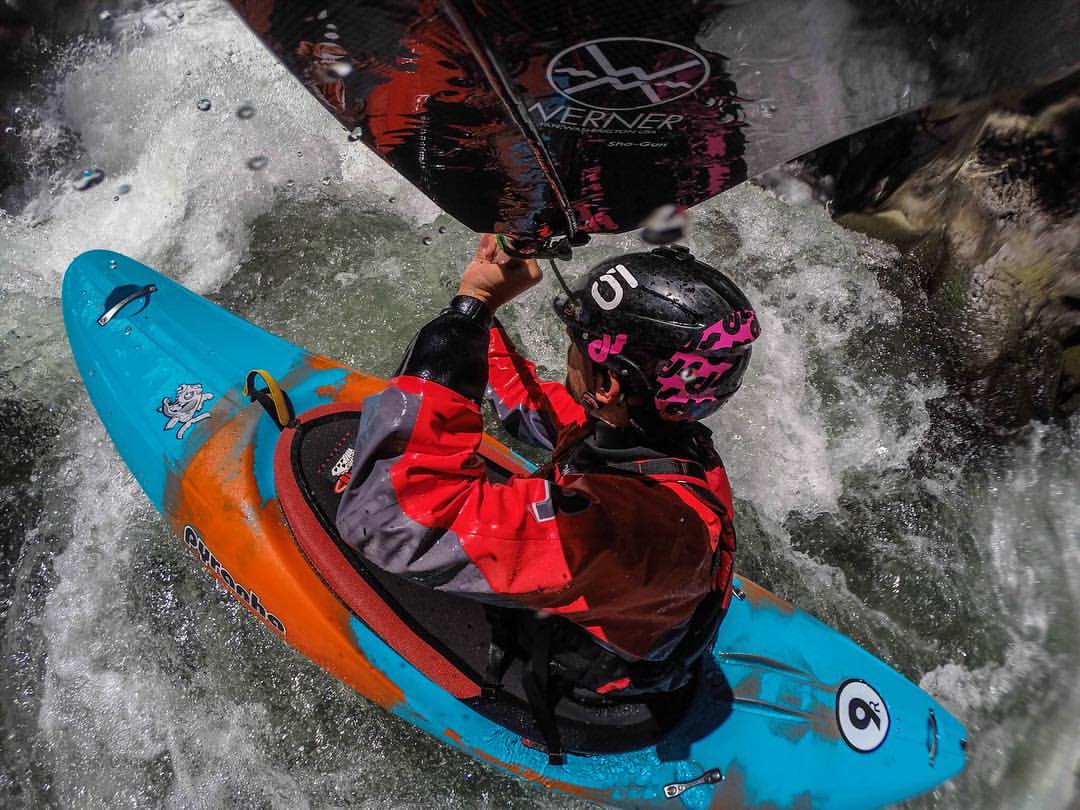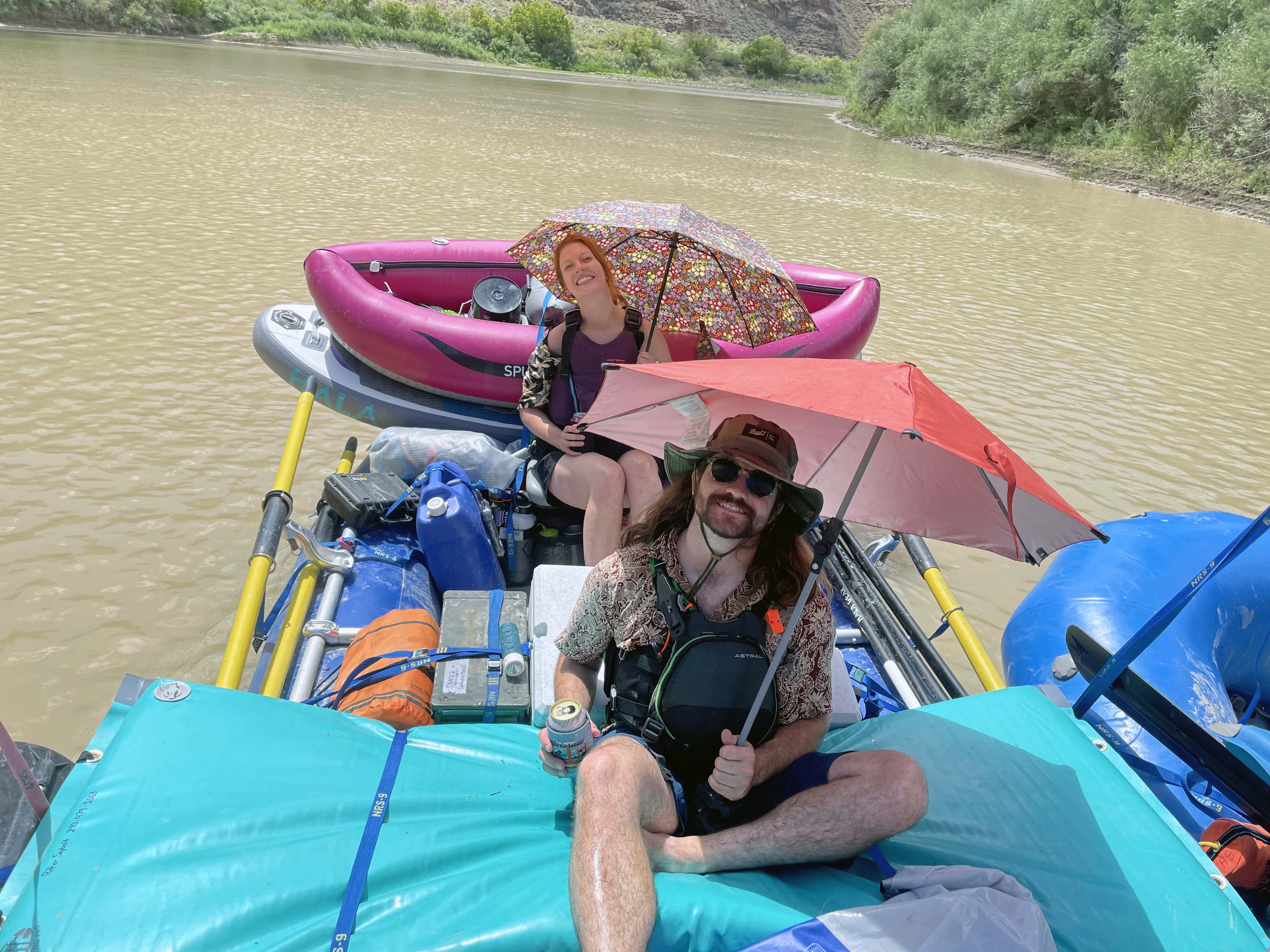Oh man it’s about to get real… You applied for all those trips on Recreation.gov because your friends begged you to and you actually won a permit.
First off, take a moment to be stoked. You are one of the lucky ones. Private permit odds are decreasing every year. Some rivers, like the Selway or Yampa Canyon have about a 2% success rate.
Next, know this (and it may be a bit anxiety-inducing... but we promise we'll walk you through it): You are now responsible for a lot of planning to make everything – from foods to boats – come together.
You’ll likely obsess for months over a 4-8 day trip. But, it’s all worth it.
To help calm the nerves, here’s the first things to think about:
Think of river trips like Fight Club... and the first two rules are not to talk about it. Resist the urge to post your permit win on social media.
You will thank yourself later.
Why? Once people find out you won a permit, you’ll start to get inundated with casual requests for information about the trip. The most commonly asked question is "how many open spots do you have? and can I bring my girlfriend?"

While it’s great to feel like a celebrity, this newfound fame will quickly dissipate and you’ll realize you said "yes" to 23 people for a 15 person permit. Then, you'll be forced to have some hard conversations. It’s pretty easy for people to feel bent because they weren’t invited.
Next, understand that group dynamics can make or break a river trip. In fact, figuring out who you want and need on your is the single most important factor to planning.

First thing to think about is the regulations. Read them closely for required gear. Do you have it? Will you buy it? If not, who has the things you need? Those are the first people to quietly let in on your plans and confirm they can go.
As your group comes together with those who you need to have on the trip to make it work out, then you start your shortlist of who you want to fill the remaining spots.
Think about people’s attitudes. People who are reckless or party super hard may not be the best folks to bring along. It’s fun for a night, but shenanigans can get old after while.
Hard (and I mean really hard) partiers are also a safety liability on long trips as well. First Aid stuff is great to have, but ideally you aren’t using it because people are keeping themselves in check.

Keep one thing in mind, for every one person you invite, they’ll want at least a +1, if not more. Be ready for that request, and understand that these +1 or more can be wildcards on your trip. Make sure you know their +1, and don’t let them bring a whole crew unless you need to fill spots.

Once your group starts to come together, the next thing you need to do is plan logistics. If you cast a wide net for permits like I do, sometimes you are driving 8-12 hours away to a place you’ve never been to for the trip.
As the TL, it’s important to know how you’re getting there, who is driving, who has trailers for shuttling gear, and how shuttle is happening.
For those who might not be familiar; “Shuttle” is moving cars to the take-out from the put-in, since rivers don’t go in a circle.
Most river sections that are permitted have about a 3-5 hour shuttle one-way. Most of the places we like to boat tend to be not very close to roads.
Some trips, like the Main Salmon, require an insanely long shuttle – it's 11 hours one-way from the take-out to the put-in. Running that shuttle yourself is not ideal, and paying for guides to do it is pricey.

Take my advice - bite the bullet and pay for a third party shuttle. It’s so much more worth it than running long shuttles yourself ahead of all of the other logistics that go into gear getting packed and boats launching. Splitting the cost up among the group is worth it.
There is a chance that something happens to your car/trailer while in the shuttle company’s control, but it’s equally likely that will happen while you are driving. Guides don’t want to deliver your car to you broken at the end; they are as careful as they can be.

There are some rivers that have unique shuttle options. The Main Salmon has one option (if the water is high enough) to de-rig at the takeout, load your boats and gear onto jetboats, and blast back upstream at like 30 miles per hour to the put-in through the rapids that just took you days to run. Do it if you can, it sounds like an awesome way to end the trip, and a really interesting perspective of your last few days.
There are also several river sections where flying back to the put in is a good option. Airplanes can’t carry all your gear, but they can carry the majority of people back to their cars, reducing the necessity for cars to be shuttled to the take out. Deso/Gray, Middle and Main Fork Salmon are a few examples.
Get your shuttle sorted out as soon as you know who is for sure committed to your trip. Build those costs into your up-front costs so it isn’t a surprise later for folks who might be budgeting close to the trip.
After you’ve got shuttle and your crew figured out, it’s time to get into the nitty gritty. Do yourself a favor, start a google sheet that is a spreadsheet to help organize.

A Google Sheet is ideal because its shareable and collaborative, unlike an Excel doc that might end up being 100 versions of the same document being mailed around by the end of trip planning.
Every good trip I’ve ever been on has had a good Google Sheet ahead of time. If you don’t have a Google mail account, it’s time to grow up and get one, it's free.
This sheet is the central place where information about the trip is shared. Some major things on there need to be:
- A roster of who is going, contact info, and vehicle information.
- Emergency contacts for every trip member.
- A roster of boats and small crafts. Who are the captains, who are passengers.
- A review of required gear - who is bringing what? It’s super important that this is crystal clear to everyone, so you don’t end up at the put-in with too many or too few of the required items.
- Tentative plan for each day.
- Meal plan for primary group shared meals.
- Allergies, both food and environmentally related, and medical conditions.
- Breakdown of costs up front, so people understand what they owe, and to whom.
As for point #5 - Chances are, someone on your trip has done it before. They have good beta on campsites, feasible mileage per day based on the flow and how flat or continuous the river section is on a particular day, and alternate plans for sites that may be taken. On long trips, sites are rarely assigned. On shorter trips, the ranger usually assigns sites at the put-in.

Once everyone fills out the spreadsheet, you’ll be able to see what you might need to stay away from when it comes to allergies or preferences for food.

For large trips, it’s incredibly inefficient for everyone to make their own meals. The kitchen gets too crowded and way too much food ends up getting cooked. There are a finite amount of pots, pans, and cooking utensils, and having to wash them over and over again because everyone is doing their own meals makes the dishwater pretty gnarly. It also makes cross contamination pretty much a sure thing, which is bad for people with food allergies.

Doing group meals also means that you keep the overall cost of feeding 15-25 people down to a minimum, while providing the most food possible for the group.
Some seasoned river folk have a full kitchen set up, and they are very particular about how it’s set up, broken down, used, and cleaned. In some cases, these people are perfectly fine also being the cooks for the trip (they own all this stuff for a reason).

Other trips either have a hodgepodge of gear from a few different parties that come together to make the kitchen. In these instances, most of the time people take turns being the cook group. Cook groups are usually by boat.
Most people don’t go on a river trip on their own, so it makes the most sense to organize cook groups by what boat they are connected to. Cook groups are typically 3-4 people.
As long as you don’t overlook the importance of planning your group, shuttle, and meals planned well in advance of the trip, the rest of the details will fall into place as the trip approaches.

Updated 11/17/23




